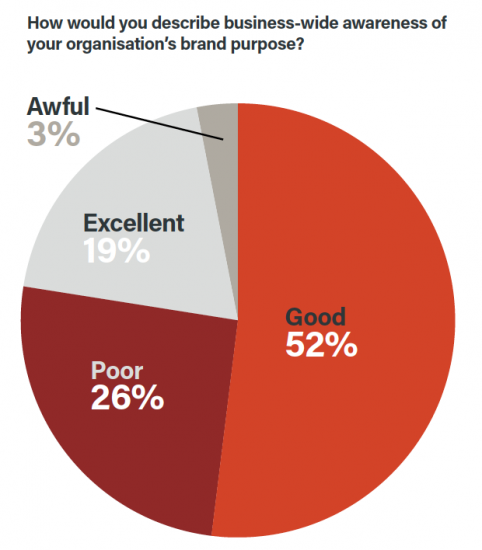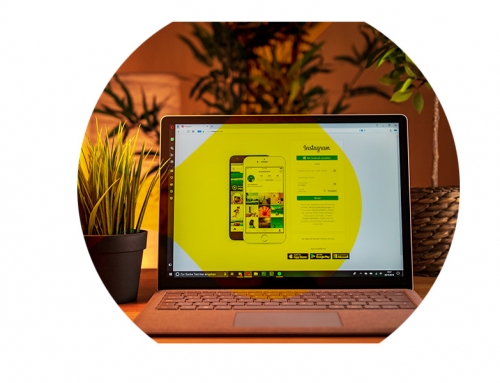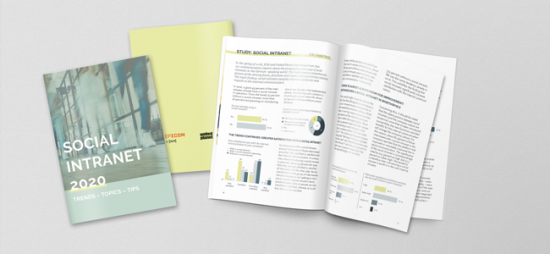Open any industry magazine, attend any event or scour those insider social feeds, and the hot topic is more than likely brand purpose. Its increasing importance in communications is unique as it’s not just this season’s fashion, an annual trend that’ll soon be forgotten. Far from it, it’s a fundamental reshaping of the way internal audiences are willing to be talked to and understand their own role in the working environment.
Much consumer behaviour is now driven by brand purpose considerations – one of the secrets of Apple’s global brand success. But consumers are also employees, and a brand’s best ambassadors, so the manifestation of brand purpose needs to start with them.
The younger generation – our future employees – are expecting purposeful change more than any other demographic; there is a clear expectation that brands lead on and not just react to societal, political and environmental issues. For brands this means not only showing their true colours but first and foremost understanding what those colours actually are.
Companies need to know why they are, not just what they do
And this is the crux of the issue: many companies are still not clear on their own purpose, the why of their existence. They either don’t know or if they do, they have failed to communicate. But how do you succeed in a world that’s increasingly purpose driven, trying to attract talent who want to understand the point in working for you, and customers who wonder why they should buy from you?
There’s the story of when former US President John F. Kennedy first visited NASA in 1961. During his walk-around, he met an employee, sweeping the floor. He asked him what his role was. The man responded proudly: “I’m helping put a man on the moon.” This NASA employee had understood and embraced his employer’s purpose.
Young employees today want to know what their role in the bigger picture is: they don’t apply for a job at a company that makes cars, or pharmaceuticals, they don’t stack shelves or do the code for websites. They are forward looking, solutions driven, seeking to fit into a bigger context. They want to design, research and work for a better future, globally. Social media has brought the world to our fingertips, and everything – including communication – suddenly has a global context.
Employees at Skanska for instance, anywhere in the world, know that they don’t come to work to design or build a bridge or school; they “build for a better society”. How much better does it make you feel about your job knowing that you have a part to play in a much bigger scheme of things?
Shaping a new purposeful reality for communication professionals
The communications industry globally has its hawk’s eye on this hot topic. Forbes says that purpose driven communications campaigns have increased by roughly 24% year on year. Half of the Cannes Lions gongs are now awarded to purpose campaigns and at DRPG, we have seen a ten-fold increase in purpose related briefs since 2017. So, we know what to do, right? Well, being an insightful bunch, we thought we’d better ask a few industry professionals, to make sure…
We knocked on the digital doors of 110 businesses across all industry sectors to ask about brand purpose and reeled in some great information from the inhouse communication professionals. ‘Purpose’ was top of the agenda for 91% of companies surveyed. What’s most interesting is that communications professionals appeared somewhat generous (or perhaps deluded) when talking about the impact their comms was having: 52% described internal awareness of their brand purpose as good, 19.4% as excellent. Could they evidence this?
The truth is that trust in brand messaging has been in sharp decline since 2017 and the view from our professionals may have been influenced by the amount of time they spend working closely with brand purpose; to them, it’s obvious. The actual evidence, however, makes for grim reading: 60% of employees attest that they don’t receive anywhere near the required information about their own company’s brand purpose. Externally, the figures are even worse. Not surprisingly: when the brand ambassadors – the employees – don’t know, they can’t pass their knowledge on. It all starts with your own people.
There is undoubtedly a discrepancy between the communication professionals’ view and the word on the street. Our analysts have attempted to unpick the problems surrounding brand purpose messaging and most importantly how we implement, measure, evaluate and adapt effectively. Only then will we be seen as authentic and purposeful brands and employers. To review some of these findings and suggested solutions have a look at our brand purpose whitepaper (click here).
About the authors
Dagmar Mackett – Global Development Director
Born into a divided Germany, and politically interested from an early age, Dagmar studied journalism and various language s. Owing to a fluency in Swedish, Dagmar took an opportunity to move to Sweden to work as a Producer/Presenter for national broadcaster SVT. However, being serious about a career in the media and production, London was the place to be and in 1995, Dagmar relocated. Following time as Producer for the BBC and CNBC, Dagmar eventually moved into corporate production, acting communications consultant for well-known international production companies, and managing prestigious accounts such as the European Space Agency, Daimler Benz and Nokia. Since joining DRPG in 2009 as Board Director for Film & Video, Dagmar’s focus was to build an award-winning film and animation team that provides effective and creatively compelling moving image solutions for clients in different industry sectors. As of 2019, Dagmar is DRPG’s Global Development Director, establishing a global network for communications excellence to help address clients’ requirements for more internationally focused communication.
s. Owing to a fluency in Swedish, Dagmar took an opportunity to move to Sweden to work as a Producer/Presenter for national broadcaster SVT. However, being serious about a career in the media and production, London was the place to be and in 1995, Dagmar relocated. Following time as Producer for the BBC and CNBC, Dagmar eventually moved into corporate production, acting communications consultant for well-known international production companies, and managing prestigious accounts such as the European Space Agency, Daimler Benz and Nokia. Since joining DRPG in 2009 as Board Director for Film & Video, Dagmar’s focus was to build an award-winning film and animation team that provides effective and creatively compelling moving image solutions for clients in different industry sectors. As of 2019, Dagmar is DRPG’s Global Development Director, establishing a global network for communications excellence to help address clients’ requirements for more internationally focused communication.
Twitter – @dagmar_drpgroup
Callum Gill – Head of Insight and Innovation
With an extensive background in marketing and communication management Head of Insight and Innovation,  Callum Gill, operates across all of DRPG’s divisions, bringing teams together and identifying the most important trends and developments in communication, marketing, live events, video, digital, design and exhibition. He pulls together sector insights, developments in technology and general business trends, and has a wealth of knowledge within various industries and how they use comms.
Callum Gill, operates across all of DRPG’s divisions, bringing teams together and identifying the most important trends and developments in communication, marketing, live events, video, digital, design and exhibition. He pulls together sector insights, developments in technology and general business trends, and has a wealth of knowledge within various industries and how they use comms.
Callum ensures that our content strategy and creation experts are kept up to date with the latest trends from the creative communications landscape. He collates information across sectors and disciplines to help shape our responses to client briefs and ensure that our teams are armed with the latest stats, insights and technologies to deliver truly integrated communications solutions.
Twitter – @CallumGill











